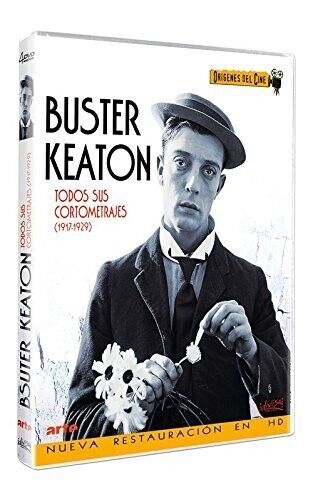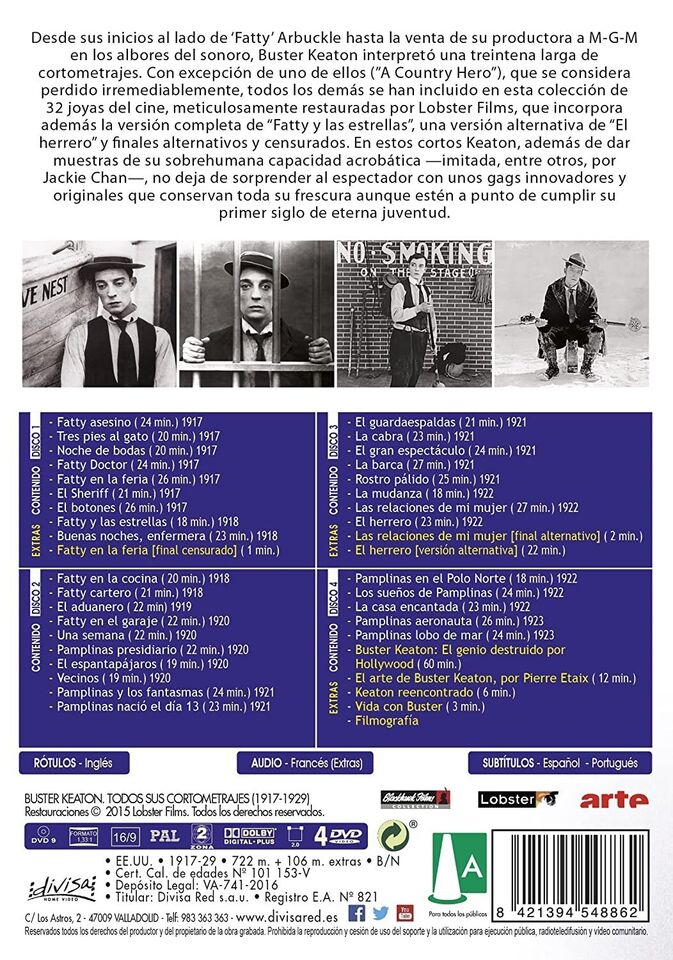Initial Ideas |
|
Sometime probably at the end of 1925 or at the beginning of
1926, Clyde Bruckman found a reprint of Pittenger’s book,
Daring and Suffering, retitled The Great Locomotive Chase (probably the enlarged and revised
1921 printing by the Penn Publishing Company of Philadelphia).
He instantly thought the story would be perfect for Buster, who was an avid history buff.
Now, Daring and Suffering is a truly terrifying book.
It is next to impossible to sleep upon finishing the tale.
To call the effect nightmarish is to understate the case.
The book would turn anyone’s hair white and would cause physical trembling.
It would leave probably any sensitive reader with less than no sympathy for the Confederacy or its cause.
Clyde’s reaction to the book was most peculiar,
for in this tale of utter horror he saw the makings of a good Buster Keaton comedy.
He had a different sort of mind, no doubt.
|
|
We can have little doubt but that Clyde Bruckman was especially taken by a minor character,
a character who is not explored at all:
William Allen Fuller (15 Apr 1836–28 Dec 1905), the conductor of the Southern train who gave chase
on foot, then on a handcar, and then on other trains.
The Northern raiders would likely have failed regardless of Fuller’s pursuit.
Yet it was Fuller who must have caught Clyde’s fancy, for Fuller was a typical Buster Keaton character,
a lone, small, almost anonymous individual fighting against the world and, eventually, winning.
It is difficult not to imagine Clyde Bruckman saying to Buster Keaton:
“Pay attention to this guy Fuller.
You could play Fuller.
You’d be perfect for the part.”
|
|
Buster read Pittenger’s book straight through in one night.
As Blesh recounted:
“Buster raced to the studio.
‘It’s a picture,’ he said to Clyde,
‘and I want you to help me direct it.’”
So, here we see that it was not only Clyde Bruckman
who could read that stomach-churning tale and perceive primarily the ingredients for a light comedy.
Buster had the same reaction, and that proves, definitively,
that his imagination was unfathomably different from yours or mine.
Buster saw Fuller as the underdog, and he could transform that rôle into his own.
|
|
Of course, Clyde and Buster were thinking from the perspective of Americans living in the year 1926.
The South had been defeated and still, six decades later, it was suffering terribly.
Nobody had to sympathize with the Confederate cause in order to sympathize with the Southern people.
Those were entirely different issues,
and the Southern people truly did at the time have nearly everyone’s sympathy.
In that different social milieu, we can perhaps better understand Clyde’s and Buster’s reactions.
|
|
Buster changed the name of the William A. Fuller character,
and he merged that character with engineer
E. Jefferson Cain
(Apr 1827–10 Feb 1897, I suppose E. was for Emmer, but I’m not sure)
and with W.&.A.R.R. machinery foreman
Anthony Murphy
(6 Nov 1829–28 Dec 1909).
As the crew invented streams of gags, Buster responded by rejecting them,
saying the film would not be a gag picture, but a straight story.
“It’s got to be so authentic it hurts,” he said.
(My intuition: What attracted Buster to the story, above all else,
was the opportunity it would provide to live out his childhood fantasy of being a locomotive engineer.
Just my intuition.
I don’t know that such was his childhood fantasy, but I bet it was.
It’s too late to ask anybody in the know.)
|
|
Buster did some research, and it was probably not difficult to find the records published by the War Department
(since renamed Department of Defense).
The records in question were originally published as
The Official Records of the War of the Rebellion,
though later volumes altered that title.
Seventy volumes.
Inside those seventy volumes were revealed details that Pittenger had not thought important.
For instance, the War Department documents revealed that the stolen engine was named
General and
that the last of the several engines that chased it was
Texas.
Buster also learned that both engines were preserved in museums.
Since the engines still existed, Buster hoped to use them.
The State of Tennessee, which then had possession of the original General,
was initially happy to loan it out the for filming —
until a descendant of William Fuller learned about the film and successfully lobbied to put a stop to the project.
He would have been fine with a serious
|
|
Buster’s idea to shoot on the actual locations proved impossible, as the tracks had been modernized, with
ballast (gravel) everywhere.
The tracks of the Civil War era had little ballast but lots of weeds.
His staff technician, Fred Gabourie, and his location manager, Bert Jackson,
located period tracks still being used by the Oregon Pacific & Eastern railway in Cottage Grove, Oregon.
Better yet, Cottage Grove strongly resembled northwestern Georgia.
The one huge difference, of course, is that whereas Georgia and Tennessee have deciduous forests,
Oregon has coniferous forests.
Big difference! Big and noticeable difference.
Production purchased three woodburning engines from the Anderson & Middleton Lumber Company’s logging railway,
as they were old enough to be converted into near replicas of the historic originals.
|
|
Bizarrely, Buster in later years misremembered that he was searching for narrow-gauge tracks,
but the Confederacy mostly used 5' broad gauge, though other custom gauges ranging from 4' to 6' were in use in various areas.
The Union mostly used 4'8½" standard gauge, and so did North Carolina and Virginia.
The W.&.A.R.R. at the time of the Civil War was 5' broad gauge.
The tracks of the Oregon, Pacific and Eastern Railway in Cottage Grove, Oregon, which were used in the movie, were standard gauge.
On a movie screen, it is probably not possible to distinguish standard from broad.
Narrow gauge refers to anything narrower than standard gauge,
and the widths from inner rail to inner rail are usually somewhere between 1'11⅝" and 3'6".
Narrow gauge is built in difficult terrains and in mining operations and so forth.
On this continent, it is seldom designed for passenger use.
The original General, by the way, was adjustable and could travel on broad as well as standard gauge.
Click here for a YouTube video of narrow gauge,
and at the beginning and then again at the end, we can see the narrow gauge side by side with standard gauge.
A world of difference, yes?
For a discussion of broad gauge versus standard gauge,
click here.
More links:
dual-gauge: narrow and standard, and
dual-gauge: standard and broad.
|
|
Railway Gauges did NOT Evolve from a Roman Chariot. Paul Whitewick Jan 1, 2024 https://youtu.be/zrq2_koM1zg When YouTube disappears this video, download it. |
|
Joe Scott, “The Reason Train Design Changed After 1948 ,” posted on Jul 29, 2024. When YouTube disappears this video, download it. |
|
Miriam’s Vintage Classics, Buster Keaton’s Unique Love Lessons, posted on Feb 22, 2022. When YouTube disappears this video, download it. You’re wondering what’s on her table?  
|
The Predecessor:
|
|
This came as a surprise to everybody when film historian and preservationist David Shepard wrote a letter to the editor
that was published in the Spring 2000 issue of The Keaton Chronicle.
Here it is, in full:
I am working on a video edition of a quite fine Civil War film called The Coward (1915, produced by Thomas Ince, directed by Reginald Barker, starring Frank Keenan and Charles Ray). Eric Beheim, who is doing the music, noticed many startling similarities to the non-locomotive-chase portions of The General. We wonder if this could have been a source for Keaton? Similarities between The Coward and The General (none of these elements was part of the original historical incident): • Confederate recruiting stations figure prominently in the openings of both films. • Failure of the heroes to enlist is used to advance the plot. • When they fall out of favor for “cowardice,” both heroes’ photographs are removed from sight by the family patriarch. • Both heroes overhear a top-level Union staff meeting at which important plans are discussed. • Both heroes hide under the table in the room where the officers are meeting. • Both heroes escape by overpowering guards and changing into enemy uniforms. • During their escapes back to Confederate lines, both heroes are fired upon by friendly sentries because they are wearing the wrong uniform. • Both heroes relay important battle information which ultimately leads to a Confederate victory. • The destruction of a key bridge figures prominently in outcomes of the final battles. For those who are interested, The Coward will be out on DVD and VHS from Image Entertainment later this year as a component of a program of Civil War Films 1911–1915. |
|
The film does make for interesting viewing.
The Coward, forgotten for seventy years, was popular when it was released,
and the few prints continued to meander around the country through sometime in 1917,
when it ran out of steam or, more likely, when the last print wore out.
It is clear that Buster or someone on his crew had been impressed by it,
and it is crystal clear that The General referenced this earlier film, largely for comical effect.
It is also interesting to note that highly decorated war hero Glen Cavender,
who played Captain Anderson in The General,
served as technical director for battle sequences on Ince pictures prior to The Coward,
and that he had worked with Charles Ray.
|